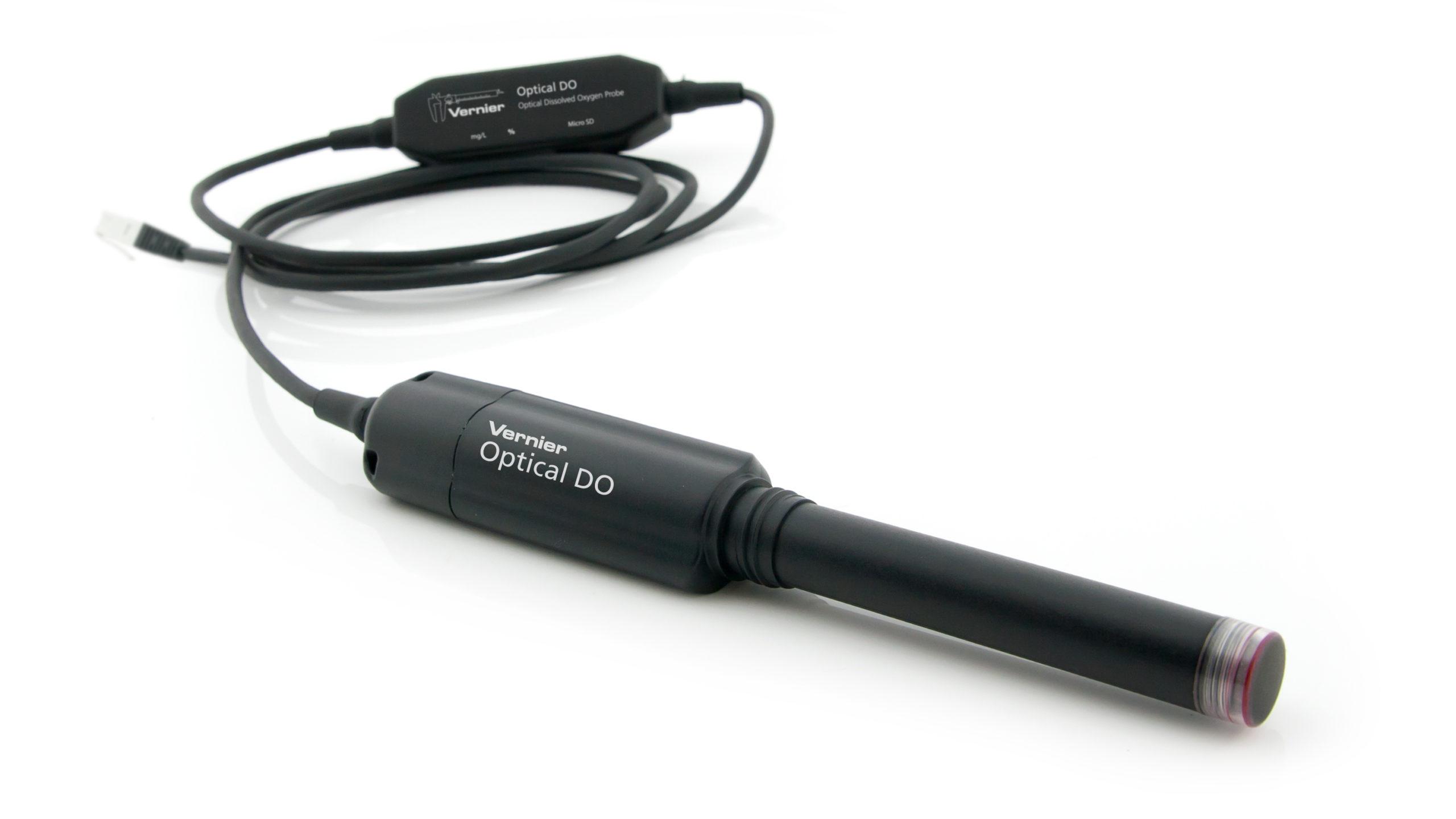Introduction
Oxygen gas dissolved in water is vital to the existence of most aquatic organisms. Oxygen is a key component in cellular respiration for both aquatic and terrestrial life. The concentration of dissolved oxygen, DO, in an aquatic environment is an important indicator of the environment’s water quality.
Some organisms, such as salmon, mayflies, and trout, require high concentrations of dissolved oxygen. Other organisms, such as catfish, mosquito larvae, and carp, can survive in environments with lower concentrations of dissolved oxygen. The diversity of organisms is greatest at higher DO concentrations. Table 1 lists the minimum dissolved oxygen concentrations necessary to sustain selected animals.
| Organism | Minimum dissolved oxygen (mg/L) |
|---|---|
| Trout | 6.5 |
| Smallmouth bass | 6.5 |
| Caddisfly larvae | 4.0 |
| Mayfly larvae | 4.0 |
| Catfish | 2.5 |
| Carp | 2.0 |
| Mosquito larvae | 1.0 |
Oxygen gas is dissolved in water by a variety of processes—diffusion between the atmosphere and water at its surface, aeration as water flows over rocks and other debris, churning of water by waves and wind, and photosynthesis of aquatic plants. There are many factors that affect the concentration of dissolved oxygen in an aquatic environment. These factors include: temperature, stream flow, air pressure, aquatic plants, decaying organic matter, and human activities.
As a result of plant activity, DO levels may fluctuate during the day, rising throughout the morning and reaching a peak in the afternoon. At night photosynthesis ceases, but plants and animals continue to respire, causing a decrease in DO levels. Because large daily fluctuations are possible, DO tests should be performed at the same time each day. Large fluctuations in dissolved oxygen levels over a short period of time may be the result of an algal bloom. While the algae population is growing at a fast rate, dissolved oxygen levels increase. Soon the algae begin to die and are decomposed by aerobic bacteria, which use up the oxygen. As a greater number of algae die, the oxygen requirement of the aerobic decomposers increases, resulting in a sharp drop in dissolved oxygen levels. Following an algal bloom, oxygen levels can be so low that fish and other aquatic organisms can suffocate and die.
Temperature is important to the ability of oxygen to dissolve, because oxygen, like all gases, has different solubilities at different temperatures. Cooler waters have a greater capacity for dissolved oxygen than warmer waters. Human activities, such as the removal of foliage along a stream or the release of warm water used in industrial processes, can cause an increase in water temperature along a given stretch of the stream. This results in a lower dissolved oxygen capacity for the stream.
Objectives
- Measure the level of dissolved oxygen in a stream or lake using a Dissolved Oxygen Probe.
- Determine the percent saturation.
Sensors and Equipment
This experiment features the following sensors and equipment. Additional equipment may be required.
Ready to Experiment?
Ask an Expert
Get answers to your questions about how to teach this experiment with our support team.
- Call toll-free: 888-837-6437
- Chat with Us
- Email support@vernier.com
Purchase the Lab Book
This experiment is #5 of Water Quality with Vernier. The experiment in the book includes student instructions as well as instructor information for set up, helpful hints, and sample graphs and data.


